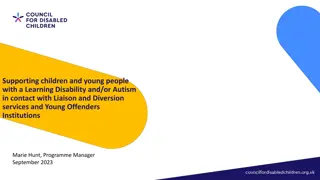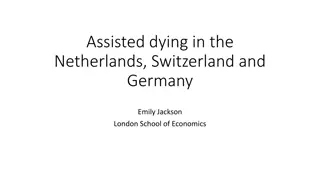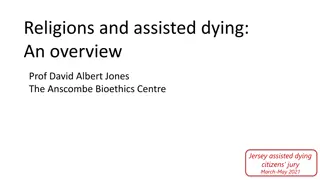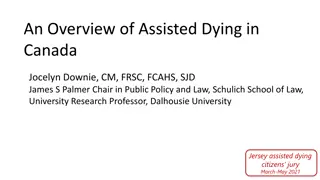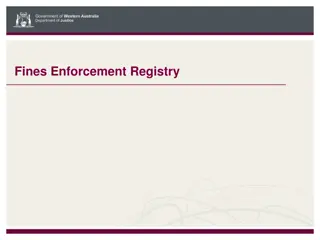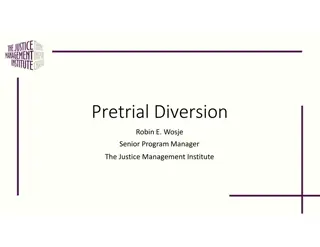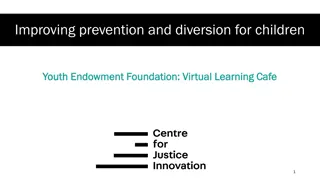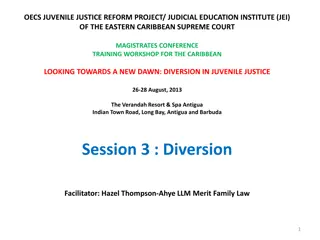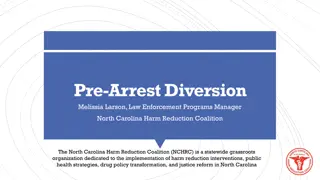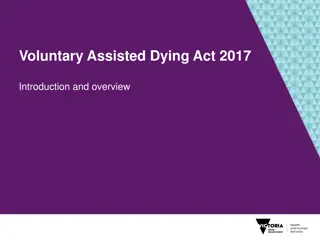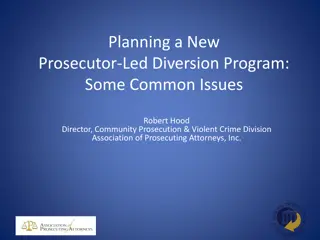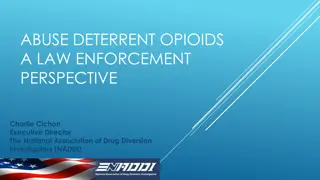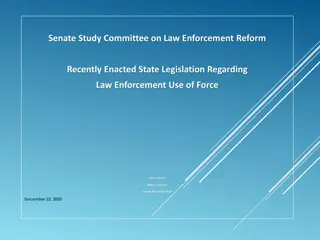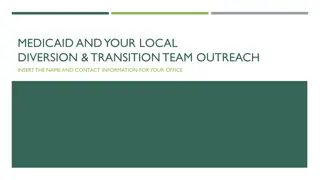Understanding Law Enforcement Assisted Diversion (LEAD) Program
Law Enforcement Assisted Diversion (LEAD) program aims to reduce unnecessary involvement in the criminal justice system for individuals with behavioral health disorders. It diverts low-level drug and prostitution offenders to community-based treatment and support services, improving public safety and police-community relations. LEAD operates through officer referrals, case management, and weekly progress monitoring meetings, emphasizing a harm reduction approach.
- LEAD program
- criminal justice reform
- community-based treatment
- harm reduction approach
- police-community relations
Uploaded on Sep 10, 2024 | 1 Views
Download Presentation

Please find below an Image/Link to download the presentation.
The content on the website is provided AS IS for your information and personal use only. It may not be sold, licensed, or shared on other websites without obtaining consent from the author. Download presentation by click this link. If you encounter any issues during the download, it is possible that the publisher has removed the file from their server.
E N D
Presentation Transcript
LEAD History Seattle began the first LEAD pilot in 2011 Followed a decade of litigation regarding racial disparities in arrests Addressed need to respond to overt drug activity in the Belltown neighborhood without excessive arrests or unconstitutional policing Santa Fe s LEAD pilot began in April 2014 as a response to opioid driven crime and increasing overdose deaths. Albany s LEAD pilot began in Spring 2016 Baltimore City launched LEAD pilot program in February 2017. Philadelphia's LEAD pilot began in December 2017 LEAD now has a national network of cities collaborating and sharing experiences and best practices
LEAD goals Reduce unnecessary criminal justice system involvement for people with behavioral health disorders Increase access to community-based treatment and services Reduce costs to the criminal justice system by connecting individuals to support services instead of jail and prosecution Improve public safety and relations between police and community members
Law enforcement assisted diversion Diverts low-level drug and prostitution offenders to community-based treatment and support services Individuals referred to intensive case management and receive treatment and other support services Police, prosecutors, and case managers work closely to support LEAD participants Utilizes a harm reduction approach Pilot zone west side of downtown: Franklin St. to Pratt, St. Paul St. to MLK.
How LEAD Works At the point of arrest an officer refers individuals to LEAD. Eligibility is confirmed through a records check and verification by the State s Attorney s Office The officer takes the individual to a LEAD case manager at the Central District where they conduct an intake and begin offering assistance The case manager helps the client access community-based treatment and/or other support services Law enforcement, case managers, and key implementation partners meet weekly to discuss client progress and to monitor the status of the LEAD pilot Officers also have a social contact referral option. The social contact referral empowers officers to assist those in need, without an arrest, while addressing community concerns related to drug activity.
LEAD Program Eligibility Adults suspected of a low-level drug offense or prostitution are eligible, except when: The individual is under supervision The individual has a disqualifying criminal record (i.e. history of violent crime, sex offense) or presents a threat to public safety The individual has an open case, or a open warrant.
LEAD Implementation Update All Central District patrol officers trained in LEAD, expanding to other units Over 60 individuals enrolled in the pilot; only two people re-arrested Evaluation underway with Hopkins Bloomberg School of Public Health. Cost Evaluation, Recidivism, Outcomes Broad support from residents, business community, and key institutions such as University of Maryland Baltimore, Lexington Market, Business Community Strong support and participation from public agencies including Public Defender, State s Attorney s Office, etc.
Seattle LEAD Evaluation Results LEAD participants were 58% less likely to be arrested than individuals arrested for similar offenses but not offered LEAD services LEAD participants criminal justice costs and utilization declined by $2,100, while control group participants costs increased by $5,961 Participants were significantly more likely to obtain housing, employment and legitimate income in any given month subsequent to their LEAD referral
Staffing Structure and peer role Case Management Supervisor oversees team Each peer is paired with a case manager and a case load not to exceed 28 Peer role Build trust within a harm reduction framework Not concerned with abstinence but with overall wellbeing Accessing care and services Not just treatment Advocacy Serving as a bridge between law enforcement and LEAD participants
My relationship with law enforcement Not enemies, compassionate Law enforcement as a tool to get people help Whether we like it or not, they are the front line response for social issues and public safety concerns They have no choice but to be there LEAD (and peers) give them an extra tool to help people Make the most of their interactions with citizens This hits close to home for many officers We have much more in common than I would have thought
Contact us! Kevin Knock C.P.R.S, R.P.S, i-FPRS Peer Recovery Counselor LEAD Program knock@bcresponse.org Phone: 443-386-9530


